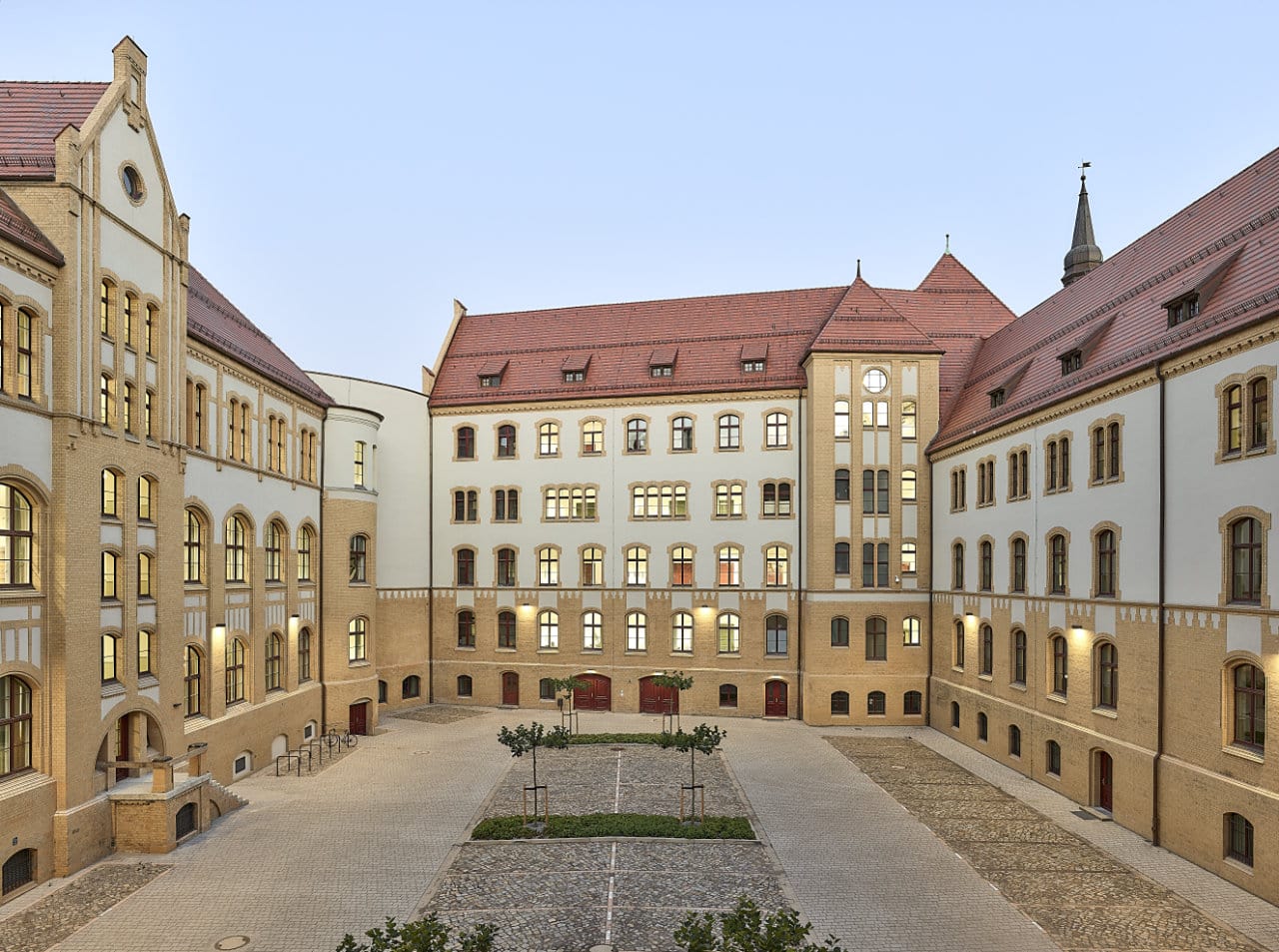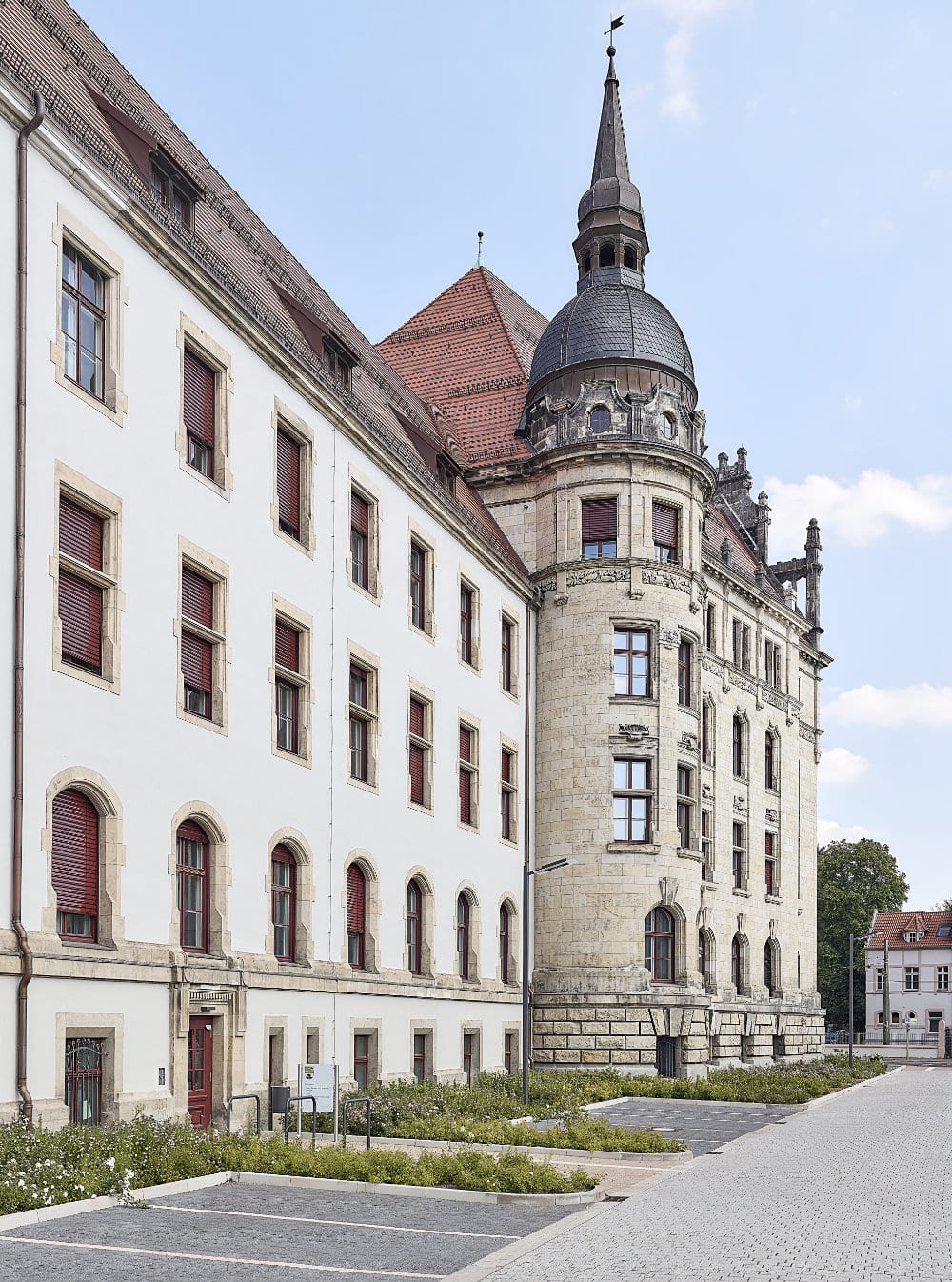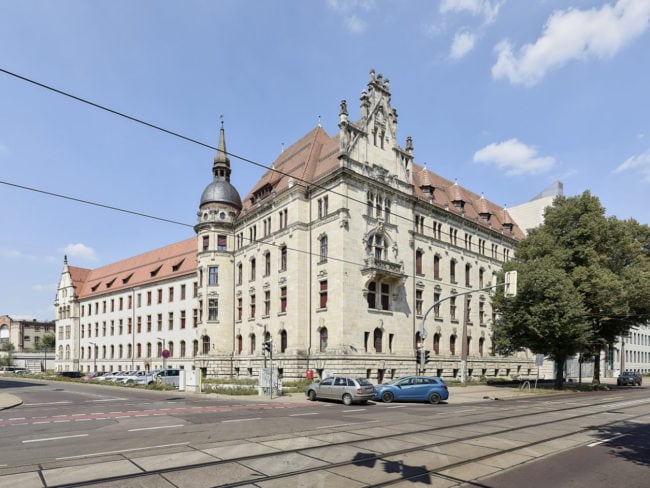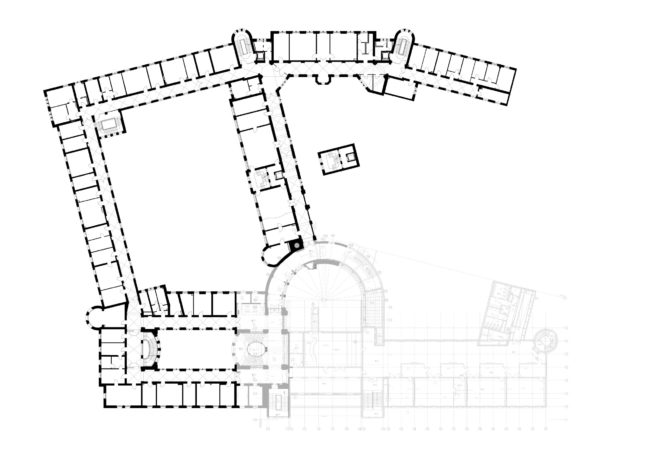In February 2015, TCHOBAN VOSS Architekten won the VOF (Procurement law for Supplies and Services of Freelancers) award procedure for the general refurbishment of the Magdeburg Regional Court. The building is located in the Sudenburg district of the capital of Saxony-Anhalt and was built between 1900 and 1906, based on a design by Hermann Angelroth (1853-1901) and Paul Thoemer (1852-1918) from the Prussian Ministry of Public Works in Berlin.

In close cooperation with the Unteren Denkmalschutzbehörde – Landeshauptstadt Magdeburg (Lower Monument Protection Authority - State Capital Magdeburg) and the State Office for Heritage Management and Archaeology of Saxony-Anhalt, the extensive, substance-preserving measures for the restoration of the historical appearance of the former Palace of Justice, which was built in the style of historicism, were carried out by 2020. The renovation and construction measures concerned the wings of the listed building, including the offices, conference rooms, administrative areas, corridors and social areas, as well as the facades and the redesign of the outdoor facilities.
The general refurbishment successfully reconciled the high demands of monument conservation and restoration with the current requirements for modern data, communication and security technology, sound insulation and room acoustics as well as a contemporary energy-efficient extension. Connection and interface areas, primarily for the technical media supply between the old and new buildings, were adapted. Ventilation systems were modernised.

A significant part of the construction measures was the restoration of the facades in accordance with the regulations for listed buildings. In the area of the main facades, they are partially or completely faced with granite and sandstone, while clinker bricks were used on secondary facades as plinths or window jambs. After the damage and measures mapping, a detailed plan of measures was drawn up to preserve the material, such as the use of stone replacements: As a matter of principle, natural stone elements were not replaced. For the partial replacement of the clinkers, suitable stones were sampled. The exterior plaster was adjusted to the existing plaster and received a new version.
The roofs were covered with plain tiles fired on open fire according to the historical model.

The solid ceilings from the construction period are, except for the large halls, designed as Koenensche Voutenplatte. Kleinesche Ziegeldecken (Johann Franz Kleine brick ceilings) were used in the halls. These constructions, which were modern at the time, still guarantee the static requirements today, but no longer meet the current fire protection requirements. With research and compensation measures, the ceilings could also be preserved and upgraded with little effort.
The partially well-preserved box-type windows were carefully restored, the interior doors of the main wings were refurbished in accordance with the preservation order. The door openings in the secondary areas have been changed frequently in recent seasons, so that there were no longer any doors left from the construction period. Replicas were used here. A special feature were the concrete door walls. These were reproduced for new door openings.

By modernising the box-type windows with narrow insulating glazing and implementing further insulation measures, such as strengthening the external walls with insulating plaster, it was possible to achieve a significant improvement in energy efficiency without abandoning the building structure or impairing the external appearance.
The court building was also converted to be barrier-free.



























